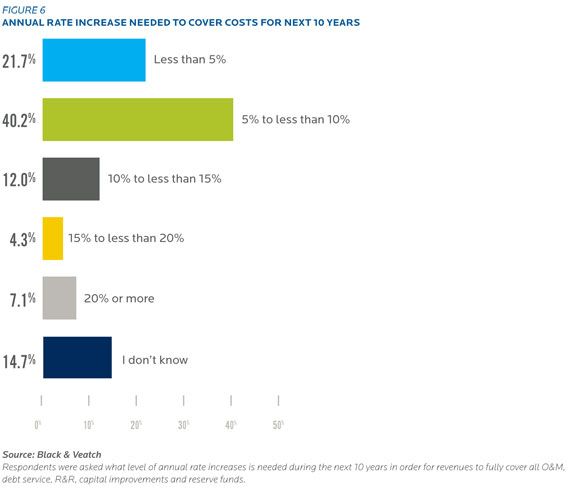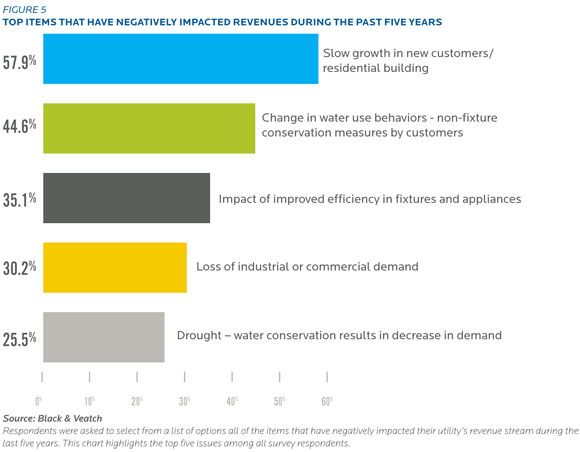Much of the buzz in the utility world in the past week was around the proposed EPA rules to limit carbon emissions from existing power plants. Some utilities are lining up for a fight, while others already have enough trouble on their hands competing in a world where outdated regulation is leaving them behind.
And then there are water utilities. For all of the challenges facing electric utilities with distributed energy resources at the grid edge, water utilities are in far more dire straits, according to a new report from Black & Veatch.
The third annual report on the U.S. water industry found that 40 percent of utilities said they would need to enact 5 percent to 10 percent annual rate increases for the next decade just to cover costs. More than 20 percent said they would need yearly rate increases of more than 10 percent, which would double rates in about seven years.

Going forward, utilities will have to develop more integrated water resource plans. Currently, only about one-third of utilities have some form of water reuse as part of their water portfolio, mostly in regions where water scarcity is an ongoing issue.
There are areas where water utilities can find money, according to the report. Less than 10 percent of survey participants said they plan to use energy performance contracting to meet energy efficiency goals, even though those contracts usually require no upfront money for improvements that will reduce operating expenses.
East Valley Water District, for example, signed a ten-year, $4 million energy performance contract with Honeywell for an energy efficiency and OpenADR demand response project that is expected to deliver more than $500,000 in annual savings. And this approach is not just for cash-strapped utilities. The Army and other branches of the military have also embraced third-party clean energy and efficiency financing.
Most water utilities point to efficiency measures and slow growth as causes of the erosion of revenue, which only illustrates that regulatory reform is needed for water utilities as much as it is needed for electric utilities.

While utilities wait for regulatory innovation, the report found that there is substantial room for growth in leveraging data analytics for operational and planning efficiencies, especially amongst small water utilities. According to the report, the majority of water utilities also are not familiar with asset management frameworks, which could help utilities take a risk-based investment approach across the entire enterprise.
“Utilities do not need to have all the tools and systems in place to begin the process of implementing a best practice framework,” state the study authors. “Rather, utility leaders can begin with the data they have and integrate new data sources over time.”
But even the prospect of investing in data analytics or cloud-based solutions could be challenging for utilities, because rates simply don’t cover the investment that’s needed to maintain the system, let alone improve it, Black & Veatch found.
Rates will simply have to go up, and by a lot in many places. Unlike with the electrical grid, however, customers usually cannot choose to go off-grid and generate their own water supply.
“Based on traditional U.S. water utility management practices, there is no clear path for overcoming the totality of today’s most pressing issues,” the study states. “Regardless of utility size or geographic location, the collective water industry in the United States must do a better job of engaging its stakeholders and educating them on the true cost and value of providing reliable and safe service."



